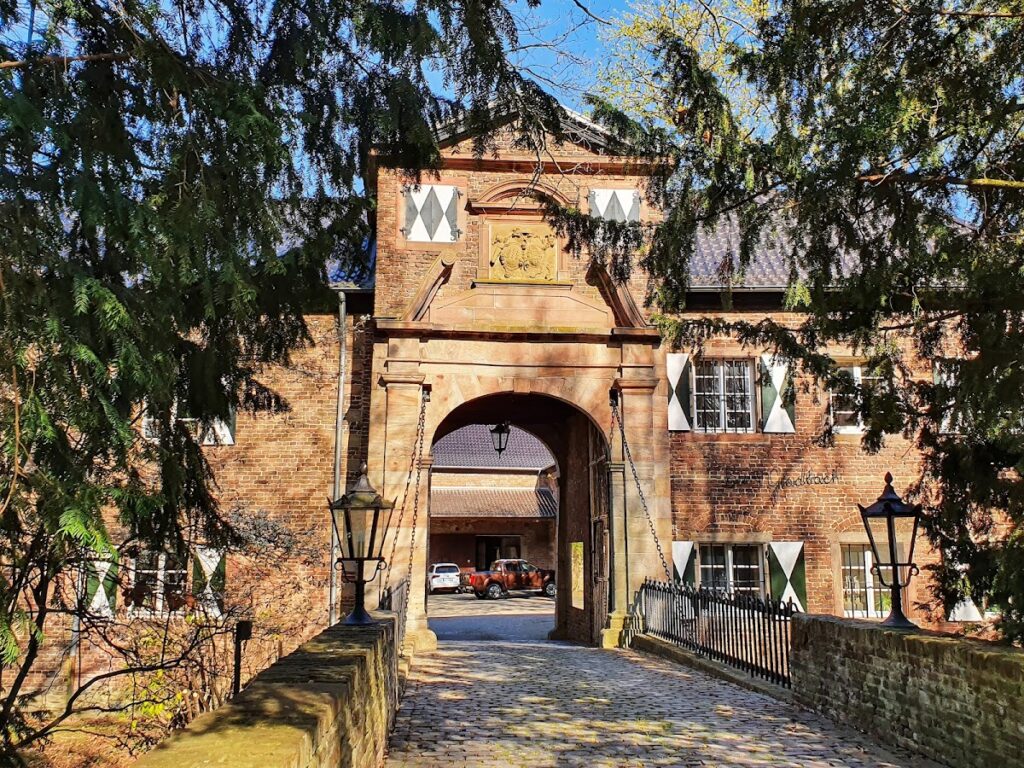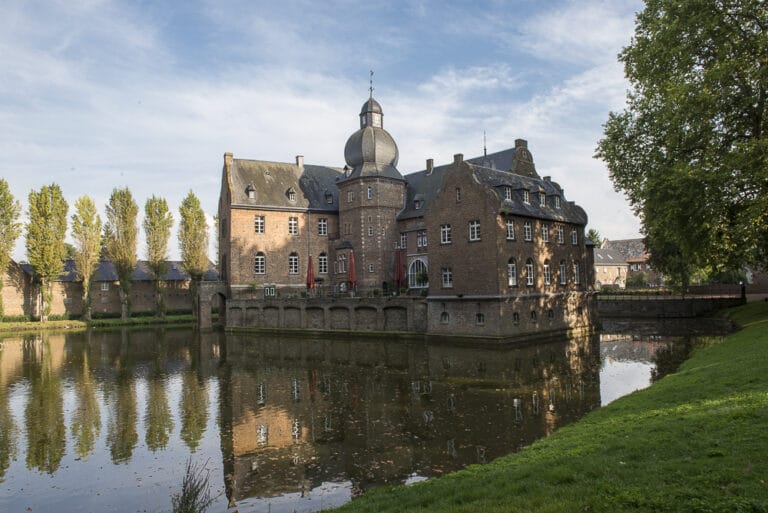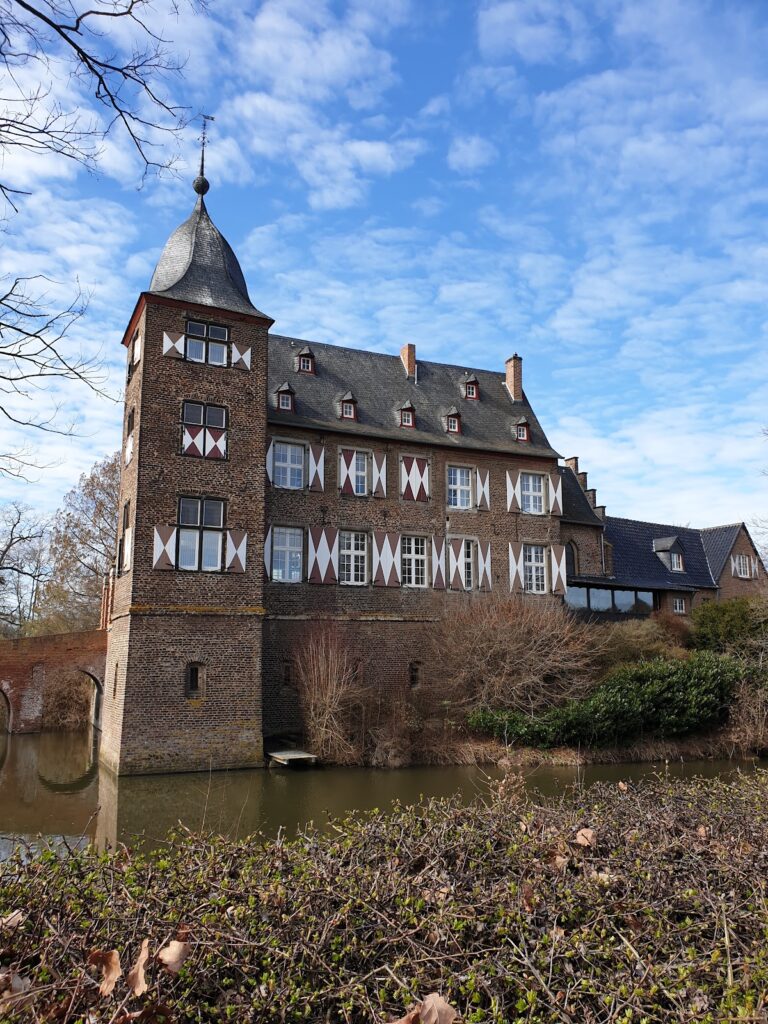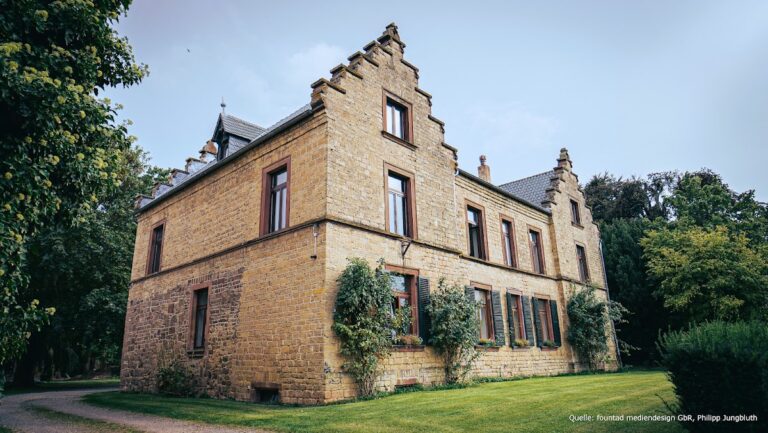Gladbach Castle: A Historic Noble Residence in Vettweiß, Germany
Visitor Information
Google Rating: 4.3
Popularity: Very Low
Google Maps: View on Google Maps
Country: Germany
Civilization: Unclassified
Remains: Military
History
Gladbach Castle is situated in the village of Gladbach, part of the municipality of Vettweiß in modern-day Germany. The castle’s origins are tied to a noble family bearing the same name, the von Gladbachs, who were related to the Counts of Jülich. This lineage is documented as early as 1102, during a period of feudal Europe when castles often served as administrative centers and noble residences. The von Gladbach family held the castle and surrounding lordship as a fief under the Counts of Jülich.
Throughout the late medieval era, ownership of the castle passed through inheritance and marriage. In 1373, the lordship transferred to Maria von Kronenburg and afterwards entered the possession of the von Palant family. The male line of the von Gladbach family concluded in 1725, marking the end of their direct tenure. Following this, Franz Kaspar von Hillesheim acquired control of the estate, beginning a new chapter in its history.
A significant event occurred in 1688 when a fire caused extensive damage to the castle. Reconstruction efforts began some decades later, in 1715, rebuilding the main residence in the Baroque style atop its medieval foundations. This redesign resulted in a four-winged structure arranged around an elongated courtyard. Franz Kaspar von Hillesheim also initiated the construction of the outer bailey, an enclosed courtyard area with four wings, including a gatehouse on the southern side, starting in 1741.
The Hillesheim family’s line ended with the death of its last member in 1786, which led to the confiscation and subsequent change of ownership several times over the following years. Among the proprietors were the von Coudenhove and Heider families, and by around 1813, the castle was held by Francois de Larchet de Chamont, the French commander responsible for the city of Jülich during this period. In 1823, Larchet de Chamont altered the main castle by transforming it into a three-winged building. This renovation introduced semicircular projections at the ends of the side wings, marking a notable architectural shift.
Later, Joseph Rey undertook modifications including roofing the honor court in 1860, creating a covered courtyard space. Ownership subsequently passed to several others, including Heinrich Bollig, Karl Bessenich, and ultimately Karl Sieger, who died at the castle in 1952. In 1971, entrepreneur Victor Rolff purchased the estate and embarked on extensive restoration and landscaping efforts, which included planting around 14,000 trees relocated due to a nearby reservoir expansion. Before his passing, Rolff founded the Victor-Rolff-Stiftung, a foundation that currently holds ownership of Gladbach Castle.
Remains
Gladbach Castle occupies a site alongside the Neffelbach stream and preserves a complex originally founded on medieval structures but substantially remodeled through successive centuries. The main building, reconstructed after the 1688 fire, was initially designed in the Baroque style as a four-winged arrangement enclosing a long rectangular courtyard. This layout allowed an organized central space surrounded by continuous wings, reflecting architectural trends of the early 18th century built upon older foundations.
Around the middle of the 18th century, the outer bailey was added under Franz Kaspar von Hillesheim’s direction. This additional enclosure similarly featured four wings arranged to form a courtyard, with a prominent gatehouse located on the southern side serving as the main controlled entrance. The materials and construction techniques adhered to the period’s standards for noble residences, emphasizing both functionality and stylistic coherence with the main castle complex.
In 1823, the main building underwent significant alteration when it was reshaped into a three-winged structure. Notably, the side wings were modified to end in semicircular forms, a distinctive feature that contrasted with the earlier more angular design. This change reflected evolving tastes of the early 19th century and marked a clear phase in the castle’s architectural development.
An additional feature of the site includes the honor court, a ceremonial courtyard space which Joseph Rey covered with a roof in 1860, providing shelter and enhancing its usability. Over the 20th century, further renovations restored and preserved the castle buildings, along with extensive landscaping around the grounds. The planting of approximately 14,000 trees stands as a significant effort to renew the surrounding environment in line with modern conservation principles.
Today, Gladbach Castle remains preserved as a historic monument, showcasing layers of construction and modification that document its past from medieval origins through Baroque and 19th-century transformations. The surviving structures stand as a testament to the estate’s continuous adaptation and ownership changes spanning nearly a millennium.










